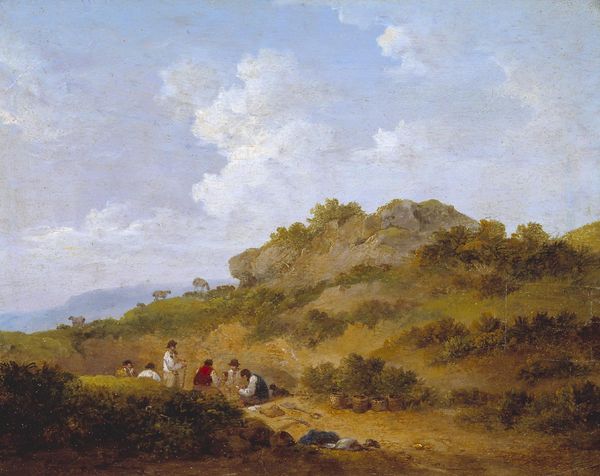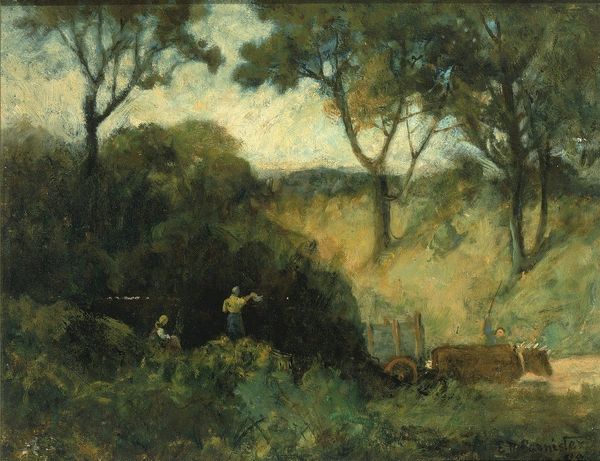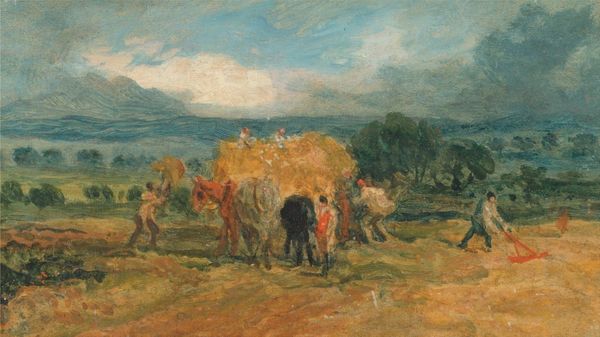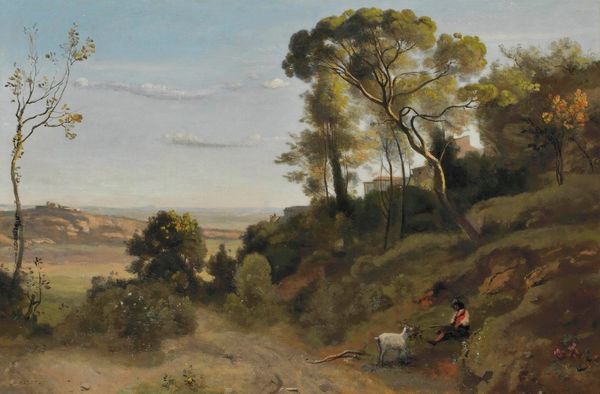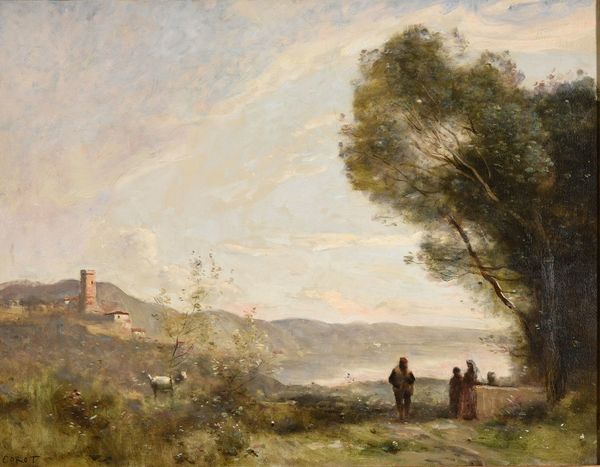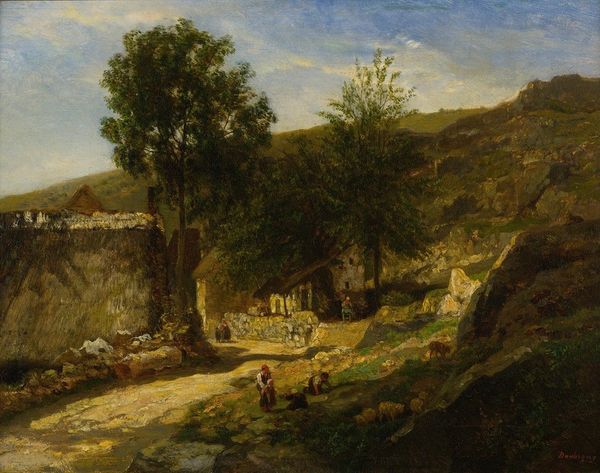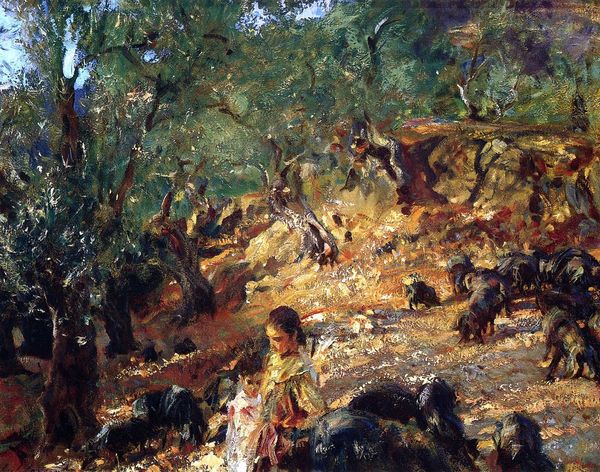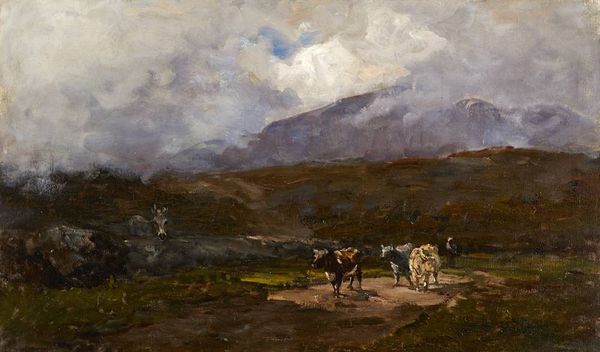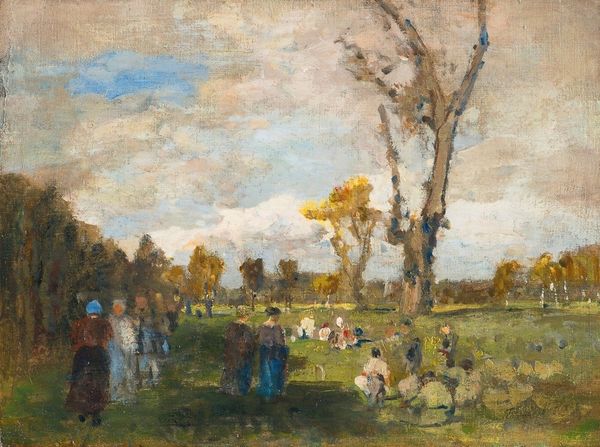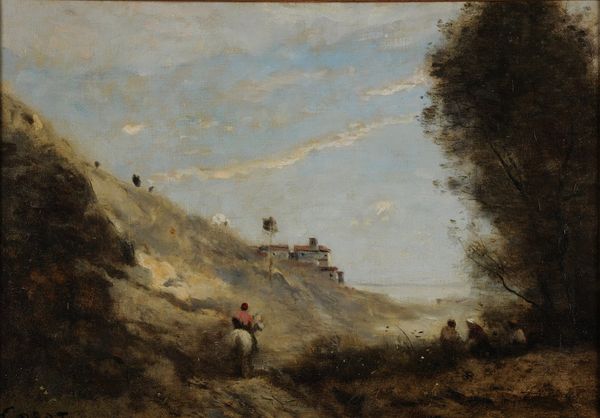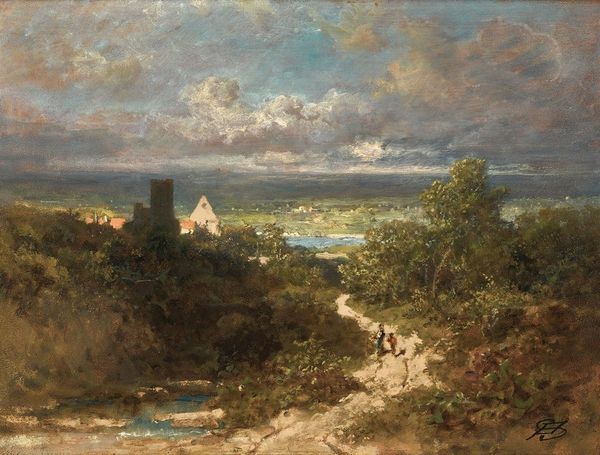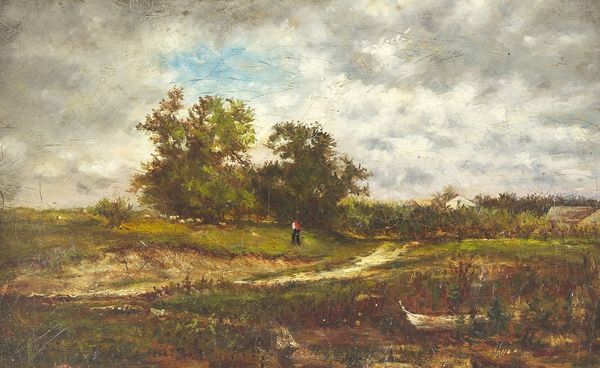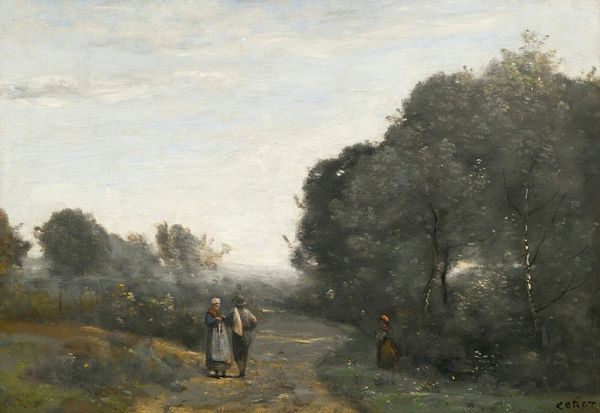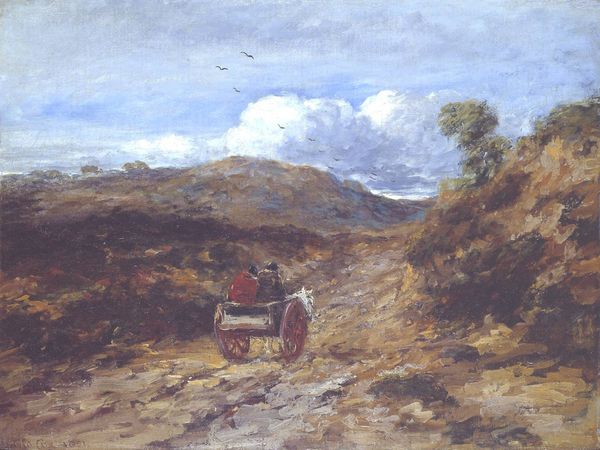
oil-paint
#
figurative
#
oil-paint
#
landscape
#
oil painting
#
romanticism
#
genre-painting
Copyright: Public Domain: Artvee
Carl Spitzweg painted "Der Hagestolz," which translates to "Theconfirmed bachelor," with oil on canvas. Notice the figure of a man in a top hat and coat, standing apart from the groups of women, children, and couples in the landscape. This separation speaks volumes. The "Hagestolz" embodies a rejection of societal norms and the responsibilities of marriage and family. Consider other figures across art history—from the wandering monks of Caspar David Friedrich to the solitary figures in Edward Hopper's paintings—all of whom reflect a similar sense of alienation. Even in ancient myths, we find characters like the Greek god Dionysus, who embodies the rejection of established order. In Spitzweg's painting, the man's isolation evokes a complex emotional state—perhaps a longing for connection, or a defiant embrace of independence. This internal tension speaks to a fundamental aspect of human nature, the cyclical dance between belonging and individuality. Thus the 'confirmed bachelor' has resurfaced, evolved, and taken on new meanings across time.
Comments
No comments
Be the first to comment and join the conversation on the ultimate creative platform.
